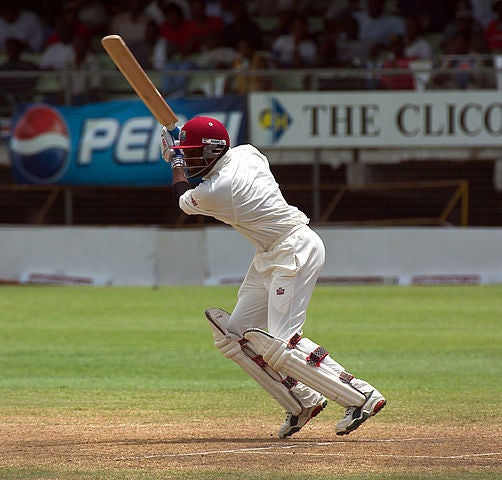So I told you about batswomen, throwing with your elbow straight, and an innings. Questions?
Oh, yes. You meant one inning? No, man, I meant one innings – and it can go up to four innings. I see. Every time the wicket is knocked over it’s a wicket? That too. But there are other ways to get a wicket. Hit the ball in the air and it is caught, it’s a wicket. The ball is going to hit the wicket but the batsman’s body gets in the way, it’s a wicket. Who decides the ball “has the intention to go and hit the wicket” but hits the player instead? The umpire, the guy with the big hat. A batsman is running and the wicket is broken before his bat or body touches down behind that line by the wicket (the crease), he is run out. Another wicket. The batsman steps beyond the crease, swings at the ball, misses. The wicketkeeper – the man with the really big gloves – breaks the wicket before he gets back behind the crease. Stumped! Out!
I’m starting to doubt I can “explain cricket” to aliens. People order another beer, check their phones. OK, somebody shouts, you said every time you hit the ball and run to the other end of the rectangle and your wicket isn’t knocked down, your team scores. Yes, that’s a run but you can also score runs without actually running. Now I’m seriously losing confidence. If the batsman hits the ball past the fielders and it hits the boundary, that’s four runs, no matter how many times he runs, or even doesn’t run. If the ball flies over the boundary, that’s 6 runs. Like a home run, with no running. Hence the “four” and “six” cards!
About time to wrap up this “explanation”, I moved to something more attractive. OK, guys, let’s go to the game itself. Guess what. There are two kinds of one-day cricket – Twenty-20 and 50-over cricket. Each team bats once (one innings) and each innings is limited to 20 or 50 overs. An over means one player bowling 6 balls from one end of the pitch. Of course, if 10 wickets fall before 20 or fifty overs the innings is done. These games last from a couple hours (T20) to nearly a whole day (50-over). Time is of the essence and batsmen/batswomen tend to be more aggressive, trying to hit every ball.
And the one that lasts several days? Oh, that’s the Test Match – four-innings games, with no limit on the number of overs, and lasting up to five days. It is a test of the strength and endurance of the players. And the spectators too, somebody says. Not really. You don’t have to go all 5 days. Some people think the first day is best, some prefer the 5th, although there may not be a 5th – test matches have lasted 2 days. You bought a ticket for the fourth day? You could have the time of your life or it could be “cat eat your supper”!
I know none of my fellow Latins were cricket fans yet. And I was just skimming the surface. But, maybe some seed was planted. Maybe in a couple years there’s a sharp increase in Latin Americans watching cricket. Anyway, I was ready to invite some of them to a street game. Or to an Oval – where people cheer, beat drums, dance to sound systems, wade in the pool, bring huge coolers of food and drink, and wear caps.
Spinners? Pacers? Chinamen? Centenarian? Next installment! IF there is demand.


Leave a Reply